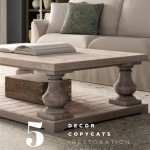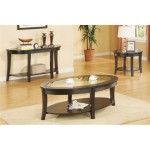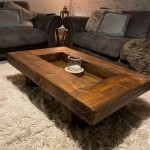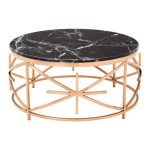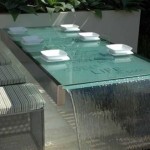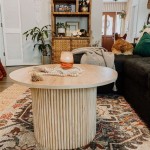Best Coffee Tables for Small Sectionals: Maximizing Space and Style
Selecting the right coffee table to complement a small sectional sofa requires careful consideration. Space is often a premium in smaller living areas, and the coffee table must provide functionality without overwhelming the room. It should enhance both the aesthetic appeal and practicality of the space. This article explores key considerations and options for choosing the best coffee table for a small sectional, focusing on size, shape, material, and functionality.
Determining the Ideal Size and Proportion
The size of the coffee table is paramount when dealing with a small sectional. A coffee table that is too large will impede movement and make the space feel cramped, while one that is too small may appear insignificant and lack functionality. A good rule of thumb is to choose a coffee table that is approximately two-thirds the length of the sectional. This proportion creates a balanced visual relationship while leaving adequate space for walking around the furniture.
Height is also a critical factor. Ideally, the coffee table should be the same height as the sectional seating cushions or slightly lower. This provides a convenient surface for placing drinks, books, or remote controls without requiring users to reach up awkwardly. A coffee table that is too high can obstruct the view and create an uninviting atmosphere. Measuring the height of the sectional seating before shopping for a coffee table is crucial to ensure a comfortable and functional pairing.
Consider the overall footprint of the coffee table as well. Even if the length and height are appropriate, a coffee table that is excessively wide can encroach upon the available space. Opt for designs that are slim and streamlined to maximize the open area around the sectional. Narrower coffee tables can still offer ample surface area while maintaining a sense of spaciousness.
In smaller spaces, where every inch counts, consider using painter's tape to outline the dimensions of the potential coffee table on the floor. This visual aid can help in determining whether the size and shape are appropriate for the room layout and the size of the sectional. This allows for a tangible sense of the space the coffee table will occupy and whether it will impede traffic flow.
Selecting the Right Shape for Optimal Functionality and Aesthetics
The shape of the coffee table plays a significant role in both functionality and aesthetics. Different shapes offer varying advantages depending on the room layout and personal preferences. Common coffee table shapes include rectangular, square, round, and oval, each suitable for different sectional configurations.
Rectangular coffee tables are a versatile choice, especially for longer sectionals. They provide ample surface area for multiple users and can easily accommodate decorative items and functional accessories. However, in very tight spaces, a rectangular coffee table may create a more formal and structured feel, which could be less desirable depending on the overall design intent.
Square coffee tables are well-suited for L-shaped sectionals or square living rooms. They create a sense of balance and symmetry and can be particularly effective in anchoring the seating area. Square coffee tables often offer a more compact footprint than rectangular tables, making them a good choice for smaller spaces, but may not provide as much surface area for simultaneous use by multiple individuals.
Round coffee tables are an excellent option for creating a softer, more inviting atmosphere. Their lack of sharp corners makes them safer for families with young children, and they can help to break up the rigid lines of a sectional. Round coffee tables also tend to promote conversation, as users can easily face each other. Due to the curvature, however, they may offer less usable surface area on the outer edges.
Oval coffee tables offer a similar aesthetic to round tables but with a slightly elongated shape. This can provide a bit more surface area while still maintaining the soft, rounded edges. Oval coffee tables are a good compromise between rectangular and round shapes, offering a balance of functionality and visual appeal. They can also be effective in navigating tight spaces while still offering sufficient area to place items.
In addition to these classic shapes, unconventional shapes such as triangular or asymmetrical coffee tables can add a modern and artistic touch to the living room. However, these options may be less practical for everyday use and require careful consideration of the overall room design.
Materials and Storage Considerations for Small Spaces
The material of the coffee table not only contributes to its aesthetic appeal but also affects its durability and maintenance requirements. Common coffee table materials include wood, glass, metal, and acrylic, each offering different advantages and disadvantages.
Wood coffee tables are a classic choice, offering warmth and natural beauty. They can be crafted from a variety of wood species, each with its unique grain pattern and color. Wood coffee tables are generally durable and can withstand daily use, but they may require occasional polishing and cleaning to maintain their appearance. Lighter wood tones can help create an airier feel, while darker woods can ground the space and add richness. Consider the existing wood tones in the room to create a cohesive design.
Glass coffee tables offer a sleek and modern look and can help to create a sense of spaciousness. Because glass is transparent, it allows light to pass through, making the room feel brighter and more open. Glass coffee tables are easy to clean and maintain, but they can be prone to scratches and fingerprints. Tempered glass is a safer option, as it is more resistant to breakage.
Metal coffee tables offer a contemporary and industrial aesthetic. They are durable and easy to clean, and they can be paired with other materials such as wood or glass to create a unique look. Metal coffee tables can be made from a variety of metals, including steel, iron, and aluminum, each with its own distinct characteristics. Lighter metals like aluminum can contribute to a lighter feel, while darker metals can add a dramatic touch.
Acrylic coffee tables are a modern and lightweight option. They are transparent and can create the illusion of more space, similar to glass tables. Acrylic is also durable and easy to clean, and it is less prone to shattering than glass. However, acrylic can be susceptible to scratches and may require special cleaning products to maintain its clarity.
For small spaces, storage is often a crucial consideration. Coffee tables with built-in storage can provide a valuable solution for decluttering the living room. Options include coffee tables with drawers, shelves, or lift-top mechanisms. Drawers can be used to store remote controls, magazines, and other small items, while shelves can be used to display books or decorative objects. Lift-top coffee tables offer a convenient surface for working or eating while seated on the sectional and can also conceal storage space underneath.
Ottomans can also function as coffee tables, offering both seating and storage. An ottoman with a removable top can provide a hidden storage compartment, while still offering a comfortable place to rest feet or place drinks. To make it more coffee table-like, consider placing a tray on top to create a stable surface for placing items. When selecting an ottoman for this purpose, ensure the height is appropriate for use with the sectional.
Nested coffee tables are a versatile choice for small spaces. They consist of two or more tables of varying sizes that can be nested together when not in use, saving space. When needed, the smaller tables can be pulled out and used as additional surface area. This provides flexibility and adaptability, making them ideal for homes with limited space.
In summary, the ideal coffee table for a small sectional maximizes space and functionality while complementing the overall aesthetic of the room. Careful consideration of size, shape, material, and storage options is essential for selecting a coffee table that enhances both the style and practicality of the living space. By applying these guidelines, individuals can choose a coffee table that perfectly suits their needs and transforms their small sectional area into a comfortable and stylish haven.

Pairing Sectional Sofas And Coffee Tables Room For Tuesday

Useful Tips To Pick A Coffee Table For Sectional Sofa Povison Blogs

The 38 Best Coffee Tables For Small Spaces In 2024 Domino

How To Choose The Right Size Shape Coffee Table For Your Living Space
What Shape Coffee Table Works Best With A Sectional 2024 Edition 2modern

How To Choose The Best Coffee Table For Your Sectional

How To Choose The Right Size Shape Coffee Table For Your Living Space

Best Coffee Table For Sectional 2024 Guide Mige Office Furniture Factory

The Ultimate Coffee Table Size Guide Apt2b
15 Best Coffee Tables For Small Spaces

